CG Supervisor Eve Levasseur-Marineau at DNEG talks about bringing a young girl’s dream world to life with simulations – dancing particles, fluids, violent smoke and even destruction.

The team at DNEG have worked their way through dreamland for the Netflix movie ‘Slumberland’, working on 230 shots over seven sequences. Leading their team of over 200 artists were VFX Supervisors Tristan Myles and Michael Grobe, and CG Supervisor Eve Levasseur-Marineau – all working with Production VFX Supervisor Adrian De Wet.
‘Slumberland’ follows a young girl named Nemo as she sets off on adventures in her dreams, hoping to find her father there who had been lost at sea trying to rescue a boat. This means that even beautiful dreams often turn into nightmares. Passing through a series of fantastic environments, she meets Flip, a reckless, equally adventurous outlaw who becomes her companion.
The team created sequences that take place inside an immense Cuban Hotel, built and populated by dancing squadrons of butterflies, and underwater where the Nemo can walk and move about unaided, meanwhile encountering an enormous, powerful eight-armed squid made entirely of smoke.

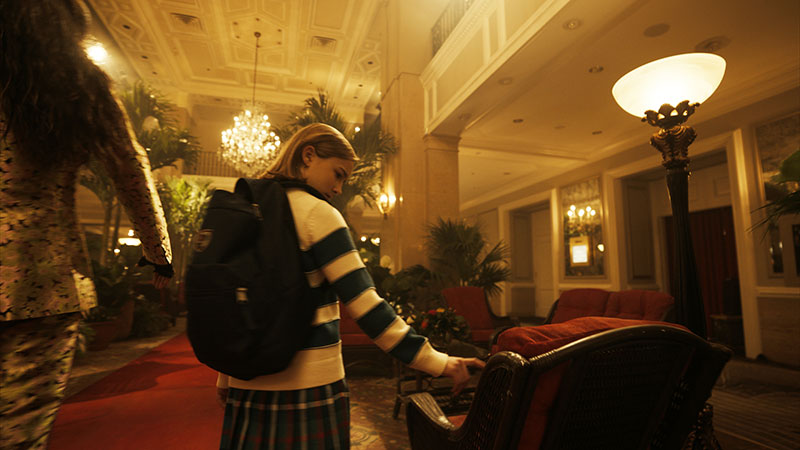
At Digital Media World, we had a chance to talk to Eve about their work. “Our build work started in December 2020, followed by the shoot that ran from February to June 2021,” she said. “Our first turnovers came just after that, in June, with final delivery landing on 29 April 2022.”
Cuban Hotel
In the Cuban Hotel, we are surrounded by colour, music and motion. The hotel lobby appears to take shape from nothing into a space where much of the structure is fully built from butterflies, before Nemo and Flip walk into a beautiful, expansive ballroom – also built from millions of butterflies. Beyond the building itself, the ballroom is filled with 200 performing salsa dancers and musicians composed of coordinated, swirling butterflies.
The sequence was shot inside a real hotel where the production wanted to preserve the architectural detailing in the high ceilings and the look of the old paintwork, peeling back to reveal layers of butterflies.
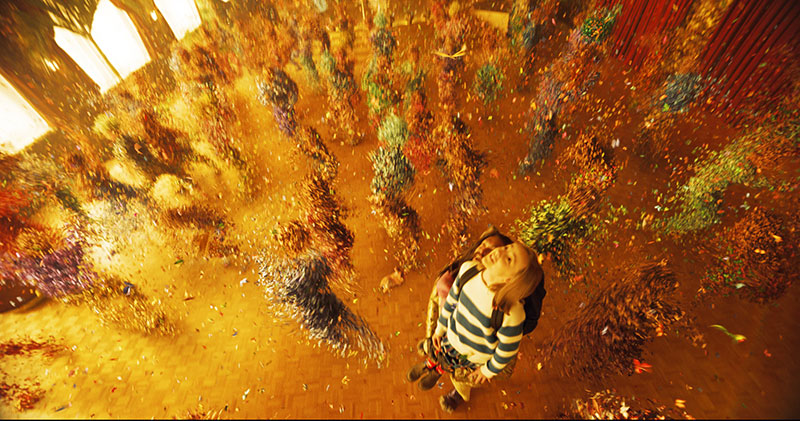
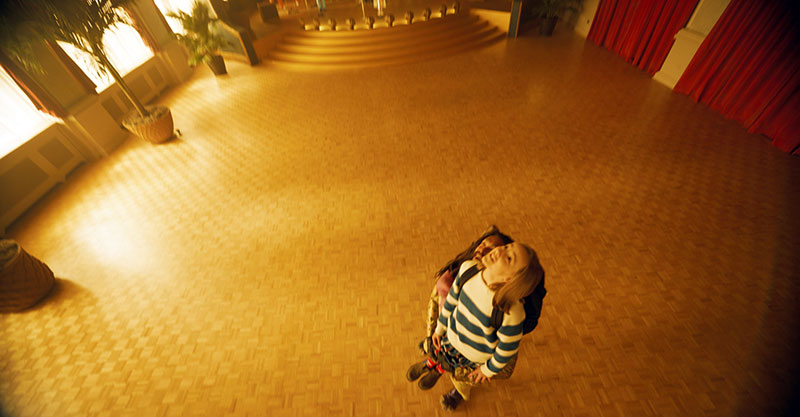
Herding Butterflies
DNEG needed to develop a way of creating and controlling countless individual photoreal butterflies for a ‘built from butterflies’ effect, and use them to accurately replace portions of the environment and create dancing characters, who were not actually present during the shoot. The palm trees and furniture, placed on set as props, were transformed and embellished with the butterfly effect as well.
As the scene could have quickly collapsed into chaos, the artists looked for ways to bring order to the hotel. While particle simulations were the principle approach, the team needed to differentiate between the type of simulation they would use for static elements like walls and furnishings, and the type they would use for the dancers.

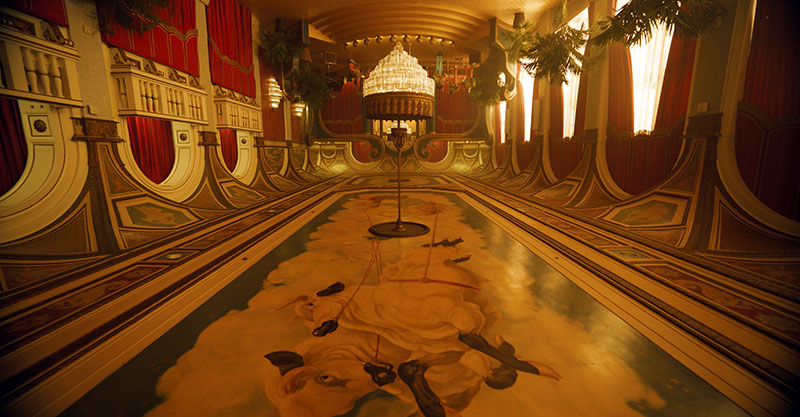
Eve said, “The dancers’ simulations needed to be interactive, reacting to the music as it changes, to the environment and other characters, and to the story beats as dramatic events take place. For instance, at one point the huge squid bursts into the ballroom.” Therefore, the Animation team devised a method to control all the performances – the butterflies, the individual performers and groups of dancers – in order to choreograph the sequence appropriately.
Colour in Motion
“For the butterflies, the individual butterflies were instanced and then re-instanced onto points with specific attributes. These attributes were location-based. For instance, the points were assigned colours, per point, according to where on the dancer’s body and where in the ballroom or lobby it was located,” said Eve.
“For the animation, the team had animation data recorded during a motion capture shoot with Salsa dancers held in Toronto, and also had clips to refer to of the dancers performing in colourful costumes. The motion data from the shoot arrived as fairly long clips – at times, the capture studio would send back an entire session as one shot – but once the Animation Supervisor Ben Wiggs had ingested and analysed the data, these clips could be cut and the performances isolated. He could then create ‘build shots’ used to accommodate story beats, create reactions and generally control what was happening in the shots.”
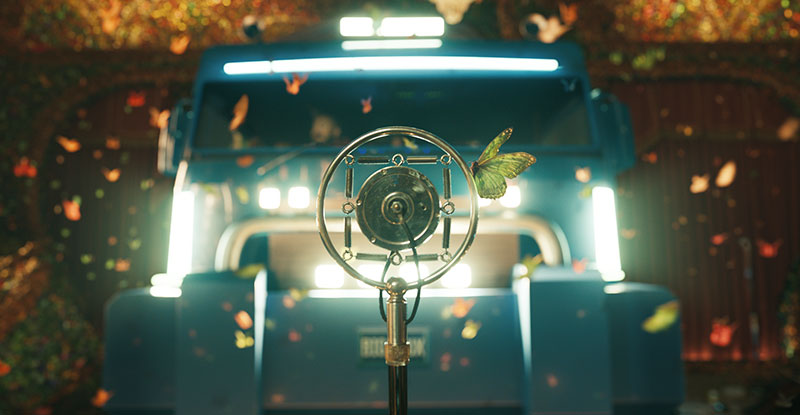
Colour was also critical for visual clarity as well as the look. Since two colour palettes had to be followed, one for the walls and one for the dancers, DNEG were also sent dance costumes to help design the palettes.
Cached Animation
The shots they were creating were quite long, containing 1,000 to 2,000 frames. The choreography varied, sometimes involving circles of dancers around the chandeliers, for instance, or couples performing particular dance moves, or individual dancers. To produce these shots, caches of animation were generated to exchange with the FX team, who created the required hair, cloth and particle simulations, led by FX Supervisor Keyao Zhu.
The butterfly particle sims came back from FX as two types. For the dancers’ skin, the simulation could detach and re-attach from and to the body as the dancers swirled, giving them a more coherent shape. Then there were also sims with a general swarming effect. Once they had the animated simulations, most of the physical person could be discarded, as needed. Unlike the dancers who had to be composited into the plates, the band of musicians and singer were actually captured in-camera in the ballroom, making those characters a little more straightforward.
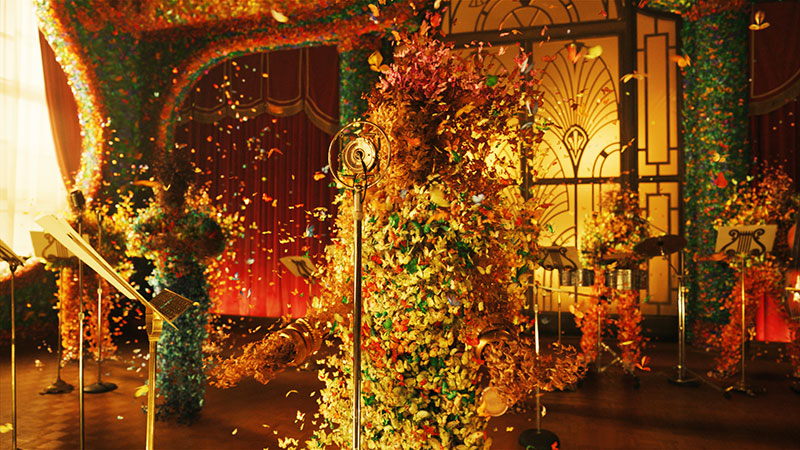
The geometry that had been passed to FX for their work was also used by the Layout team. As always, layout was critical for timing and placement, but the workflow was unusual because the butterflies and associated CFX had to be completed before layout.
Meanwhile, throughout all of this activity, the butterflies themselves were fluttering all the time. Lighting them in the different environments was tricky because the wings are translucent, iridescent and slightly fuzzy. The Lighting Supervisor Casey Gorton and artists had to take the layers and sheer number of them into consideration as well.
Nightmare – From Dream to Destruction
Unfortunately, the Cuban Hotel doesn’t continue to be such a dreamy place, but turns into another nightmare. DNEG devoted over 50 shots to its destruction. “We had two different beats of destruction in the ballroom,” said Eve. “The first one was when the nightmare squid crashes into the ballroom, partially destroying the ceiling and detaching one of the massive chandeliers. As the squid approaches, the dancers flee and the butterflies forming then detach and are simulated flying away.
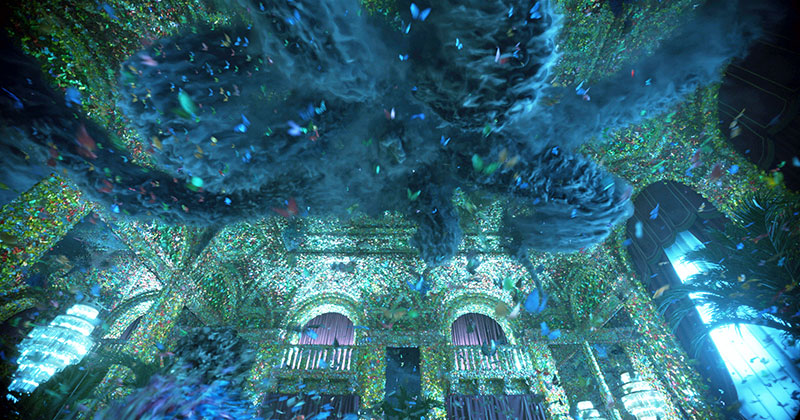
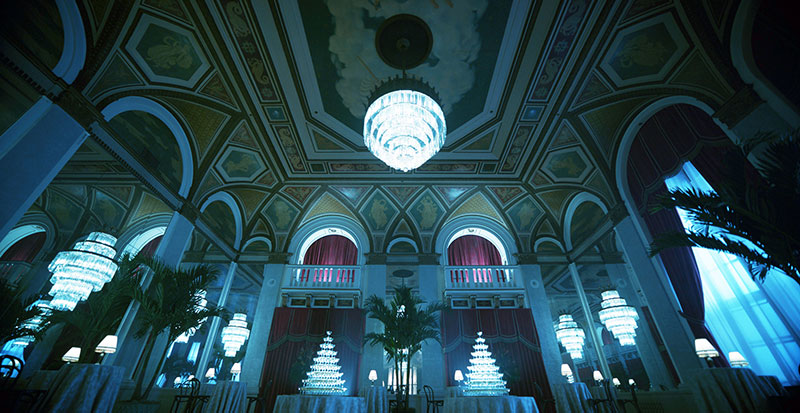
“In order to destroy the ballroom, we did a first pass of destroying the solid ballroom asset that matched the original location, and then rescattered butterflies on top of those simulated, detached pieces. The chandelier, on the other hand, hadn’t been made of butterflies originally, but was converted to a butterfly scatter that was simulated to fly away on impact in the destruction shot.”
Destruction, particle and dust simulations were needed on a number of other non-butterfly props like the piano and the planted trees.
In a second wave of destruction, the truck crashes through the gates on stage, which was partially shot on-set. “Again, we did a destruction simulation on the base geometry to match the ballroom and reattached butterfly scatters on the simulated pieces,” Eve said. “The floor was also simulated to shatter under the weight of the truck, with additional debris and dust particle simulations. The musicians, like the dancers in the first part, also disintegrate into a simulation of butterflies flying away from the stage as the trucks come in.”
Underwater World

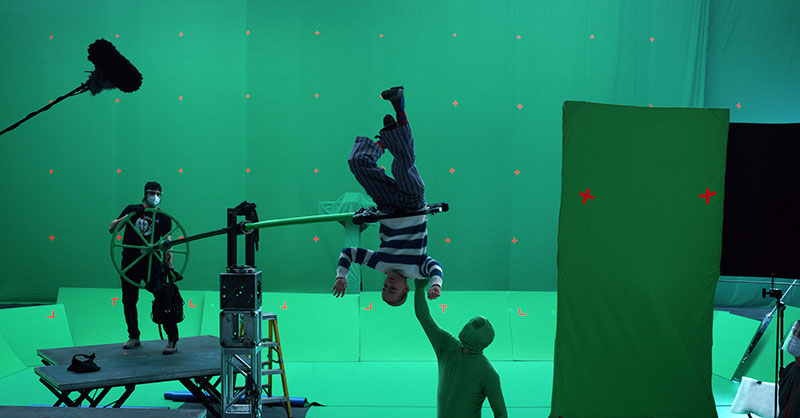
Unsurprisingly, Nemo’s underwater dream state brings her to a very different world, very slow with a dark, cool colour palette and a sparser environment. The talent was on a green screen stage, often suspended in an elaborate rig that allowed her to perform underwater moves on her own in many shots. However, some shots required DNEG to replace Nemo with a digidouble.
In the opening shot, she tumbles down through the environment. “It’s a long shot and became challenging when digital Nemo came very close to the camera,” said Eve. “The actress was wearing a cap so we could re-create her long hair to flow correctly, and we also altered her clothes with a cloth simulation for an underwater look. We allowed her hair simulation to be influenced by a water simulation happening at the same time for more realistic motion. Her live action shots were also enhanced with similar kinds of effects. Decisions were made shot by shot.”
This sequence needed some interesting problem solving and lots of iteration. She said, “The artists had to balance the real with the surreal – everything looked photoreal but the events themselves could only be happening in a dream. How to visualise the squid made of smoke – underwater? How would Flip’s and Nemo’s airplane look flying underwater? Both are impossible but had to fit into this environment.”
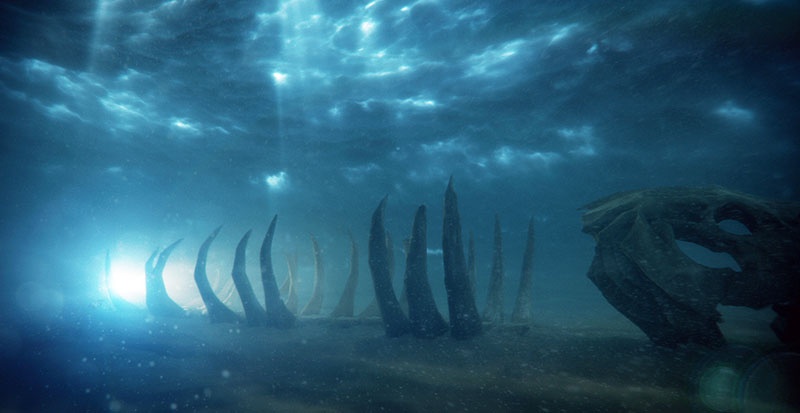


Atmospherics were essential, including ‘marine snow’, a naturally occurring phenomenon that produces a continuous shower of organic particles, falling from the upper layers of the water column. The process exports energy from the brighter zones near the surface to the darker zones below and was created with a simulation of drifting particles falling through the space. A caustic lighting pass was added as well, a feature people expect naturally to see underwater. Some other digidouble work was needed, for example, most of the airplane shots required them.
Overhead, a massive inverted whirlpool churns on the surface, in effect imitating the cloudscape up in the sky outside. Like so many of the effects created for this movie, the whirlpool needed another custom simulation. This time, a particle simulation was created with a fluid sim. Eve said, “Our main simulation software in DNEG’s FX department is Houdini. Across the show, we mainly relied on Maya, Houdini, Clarisse for rendering and Nuke for compositing.
Octo-Squid

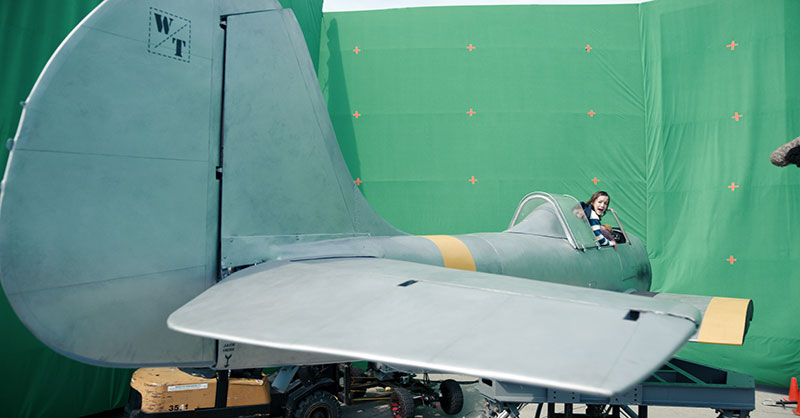
The giant squid – which the team sometimes called the octo-squid because it actually has eight tentacles, like an octopus – went through many iterations, going from fluid ink-in-water effects to the final smoke version. This squid is Nemo's nightmare-come-to-life of her father being taken by the same kind of creature.
The team’s model of the squid was first built complete in 3D for animation and rigging. The creature needed to be agile and violent, ready to crash into sets, burst through walls, and chase and grab Flip’s airplane.
The geometry and cached animation from that stage were then passed to the FX team to create the smoke simulations, which had specific requirements. The tentacle design and action had to be quite readable, calling for varying densities of smoke to give the artists flexibility when building its body, and the smoke also needed to show the characteristic roiling motion of smoke across the surface.


Reflection
One memorable sequence takes place inside a bathroom completely lined with mirrors set at multiple angles. All effects elements had to be built in full 3D to be able to create the reflections and re-reflections of all their work, including the animation, in the mirrors. But this design complication did not mean the action was kept simple. Instead, Flip’s airplane crashes in, bringing with it ice and snow that required snow simulations and destruction. Flip and Nemo manage to escape through the toilet.
Eve commented, “As much as our sequence with the butterflies in the Cuban Hotel, both this mirrored sequence and the squid with its creature FX, demonstrate the level of collaboration between departments throughout the project,” Eve commented. “We frequently had to leave behind the ‘normal’ workflow, creating CFX before animation and layout, and then compositing.” www.dneg.com
Words: Adriene Hurst, Editor
Image Courtesy of DNEG © 2022 Netflix, Inc.


















